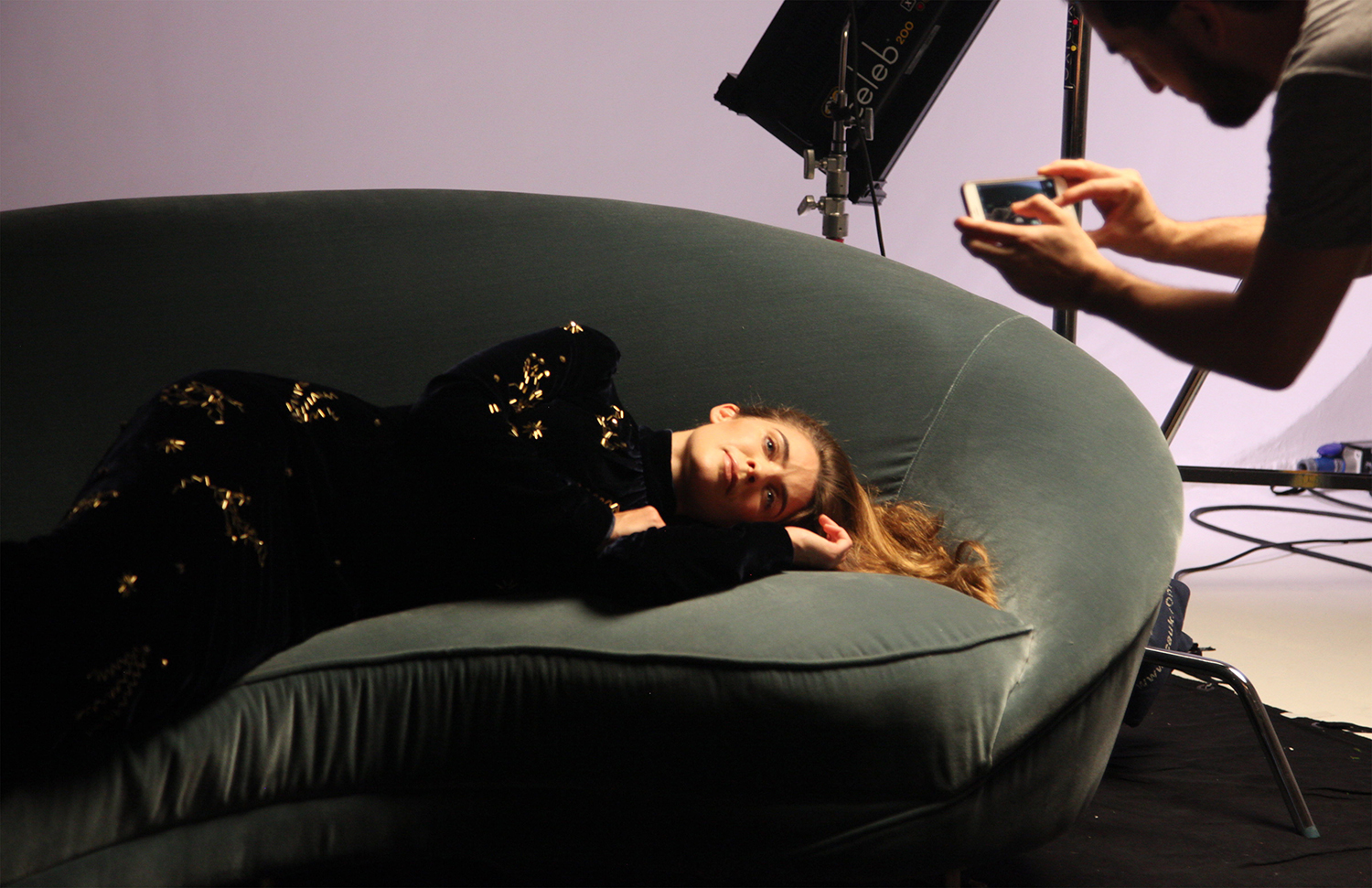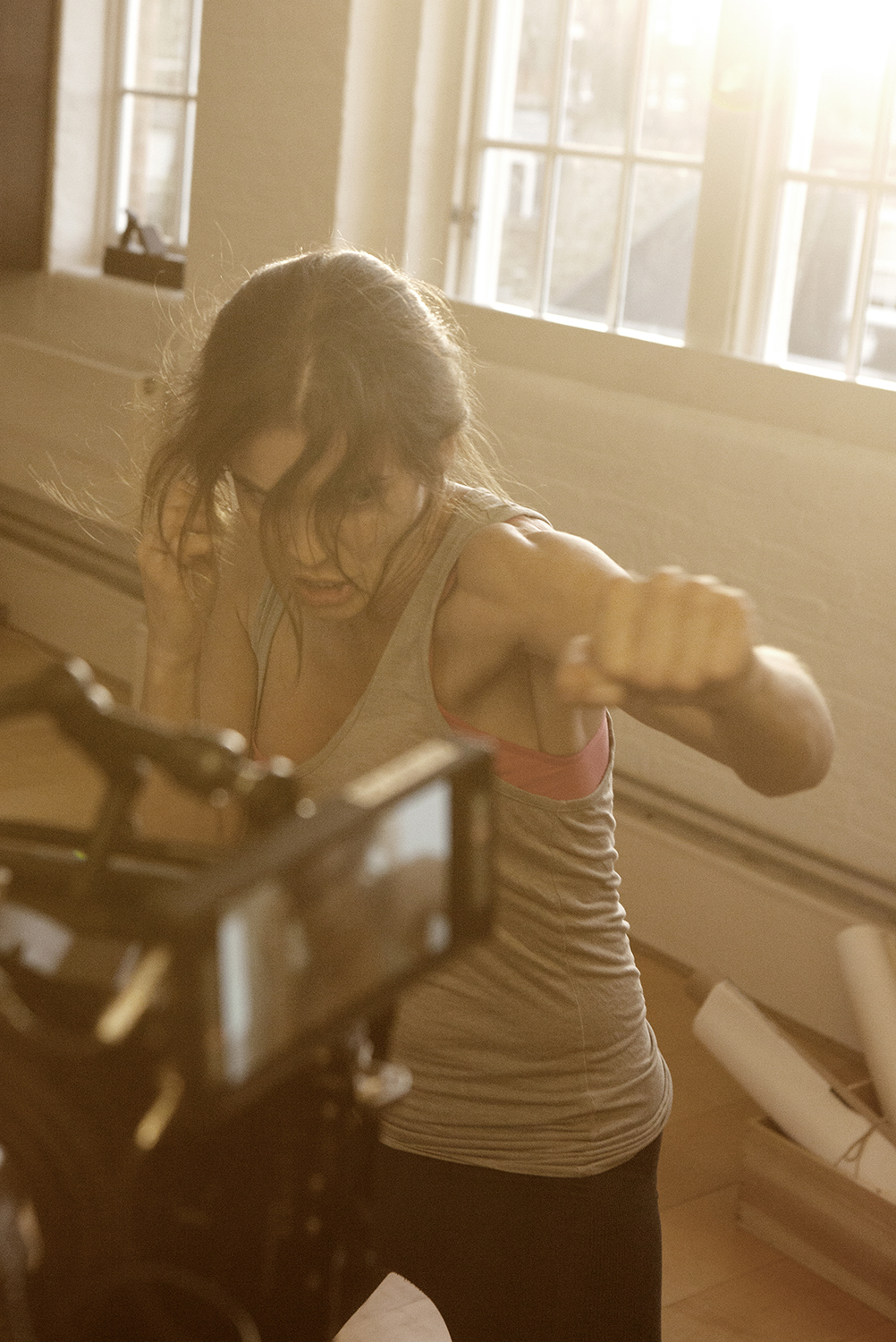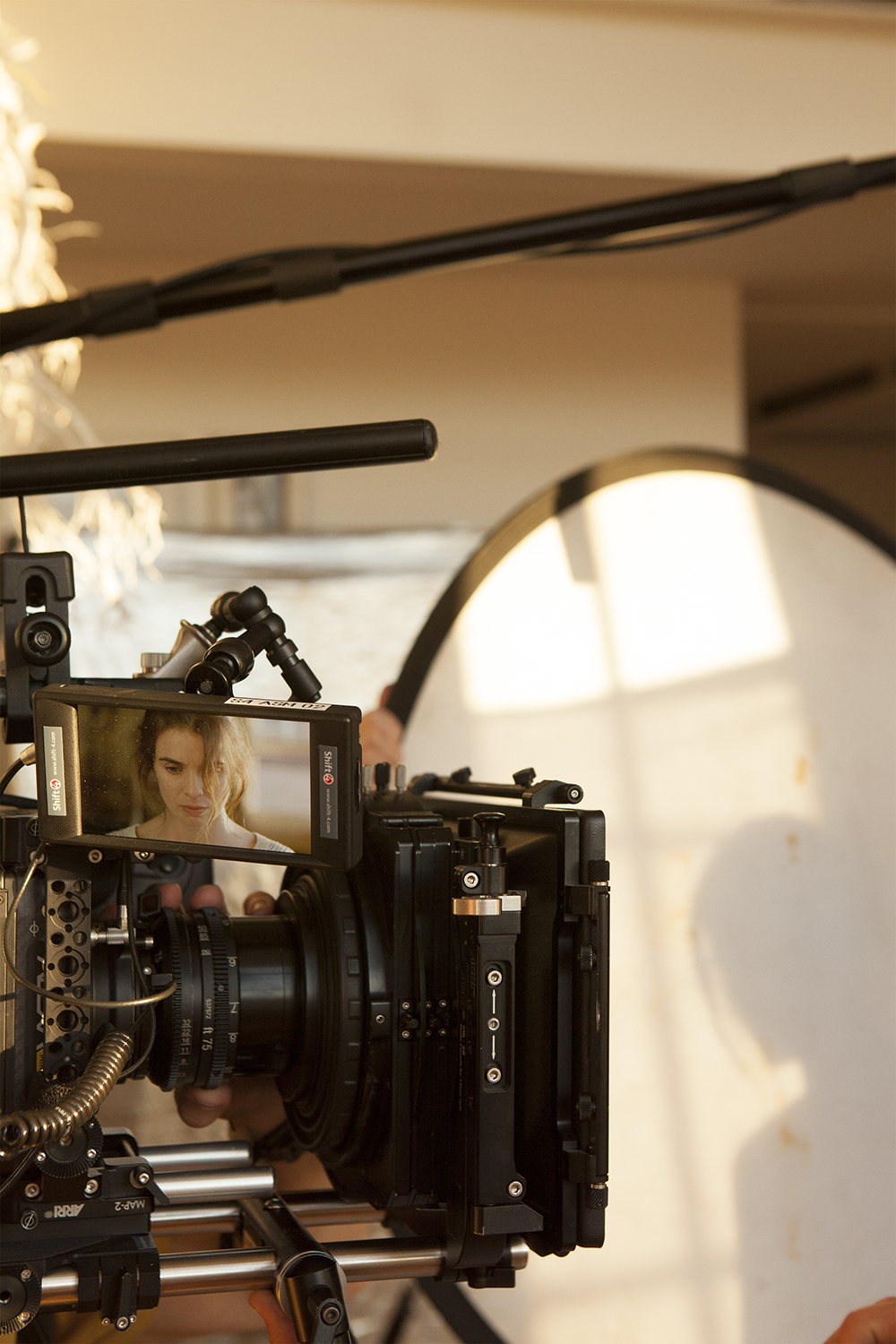Shows
Simon Fujiwara’s “Joanne”


In his previous work, Simon Fujiwara has presented versions of his own public persona and autobiography in a manner that is disconcerting and amusing. The subject of his latest film, Joanne (2016), is the artist’s former art teacher, and the resulting video and large advertising-styled photographs are as disconcerting as the mistreatment of the female subject, which is the starting point of the exhibition. While a pupil at the elite Harrow public school, Fujiwara formed a bond with Joanne Salley, a young Irish woman who was viewed as an outsider amongst the staff in the same way Fujiwara was measured by his fellow pupils. This friendship influenced his decision to focus on art, but the two lost touch until Salley became the subject of media attention when her topless pictures circulated via email between the students at Harrow, costing the teacher her career. Attempting to rebuild her life, Salley found support in Fujiwara, who began documenting her efforts to regain control of her own image.

The historic actions of women artists to reclaim control of their narratives has long been a major theme of feminist art, as documented in the excellent exhibition of work from the Verbund collection Feminist Avant–Garde of the 1970s, showing alongside Joanne at the Photographers’ Gallery in London. However, there is a discomfort present at both shows, a sense that nudges us to ponder the consequences and current state of that period of activism. Instinctively, one feels sympathy for Salley’s predicament. As a victim of exposure that would challenge anyone’s capacity for trust, she makes a final attempt to deploy the same strategies of image manipulation that cost her so much. Fujiwara observes that Salley, as a woman in her late 30s, is part of the last generation to come to adulthood before the expansion of web and digital media. In the film, Salley outlines her personal qualities and prosaic achievements, such as her marathon running and charity work, in hopes of negating the smear on her reputation, but is frustrated that she cannot shake off the label of “Topless Teacher.” The video reveals that a teenage Salley was a beauty queen, which also carried some negative connotations, but that was something she managed to set aside. (In fact, on her Instagram profile, her first self-assigned label—if the account is indeed managed by Salley—is “Beauty Queen.”)

Twenty years ago, 19-year-old Jennifer Ringley set up a webcam in her college dorm room and livestreamed her most private moments, however mundane or explicit. The images were refreshed every three minutes on a webpage she christened JenniCam. Ringley was among the first to harness the concept of using the web as a medium to view the unfiltered life of a private individual. JenniCam and Joanne represent the opposite extremes in the evolution of a self-image culture within this 20-year span. JenniCam appeared authentic; with no apparent manipulation of Ringley’s personal presentation, the site became a phenomenon, and conceptual artist Victor Burgin even praised its creator and considered her an artist. However, the glut of reality television and celebrity confessions that trailed after JenniCam’s viral sensation has created a far more cynical environment that influences the reading of Joanne. One scene in the video shows Salley with her consultants, brainstorming ideas for the strategy to relaunch her public image, employing a lexicon of vacant marketing terms. Knowing that Salley’s new identity is a group effort raises questions of authenticity within Fujiwara’s film. Additionally, Salley appears to keep a personal video diary to track her progress and to tell us how she is doing; these entries function as picture-in-picture insets in the film, but appear too polished. In another scene, she is shown walking down a street in a tracking shot that clearly involved her being surrounded by a camera crew and Fujiwara filming his own “candid” video; as she strolls, her voiceover describes her loneliness.
The result of Salley’s rebranding—large light box fashion portraits by Andreas Larsson—is anonymous and purposeless. The perfect, white interiors of her home and hangouts begin to resemble the locations and hackneyed routines of a scripted reality TV series. Even in her tears—shed after a difficult revelation—we see cracks, the moment lasting just a fraction of a second too long before Salley’s face relaxes. We are left wondering if her entire persona is an act, designed like Bertolt Brecht’s distancing effect to create critical alienation, or like Jean-Luc Godard’s self-reflexive cinema that relishes in self-consuming media. Alternatively, perhaps we have become so inured to this form of entertainment that we are more willing to question Fujiwara’s truthfulness of his portrayal of Joanne Salley, rather than challenge the image system that originally damaged her reputation.

Simon Fujiwara’s “Joanne” is on view at The Photographers’ Gallery, London, until January 29, 2017.







